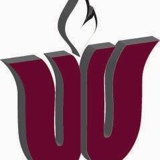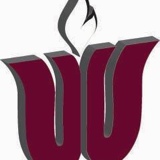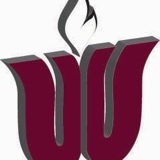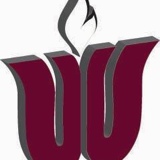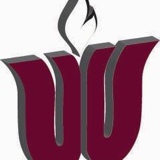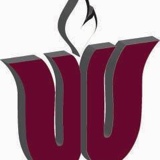Information
-
Document No.
-
Audit Title
-
Client / Site
-
Conducted on
-
Prepared by
-
Location
-
Personnel
Visitor Policies and Procedures
-
1. Date:
-
2. Time:
-
3. Entrance point:
-
4. First personal contact:
-
5. Visitor policy/procedure signs are posted at all entrances?
-
6. Visitors are required to show picture ID and sign-in, and sign-out?
-
7. Visitors photo ID is retained until check out is completed?
-
8. The supply of visitor ID badges is located out of reach of visitors?
-
9. Visitor's badges are completed by staff only?
-
10. Visitor sign-in/sign-out logs are verified by staff or completed by staff only?
-
11. Visitors are required to wear visible, dated identification, with destination listed?
-
12. Visitors are asked the reason for their visit?
-
13. Visitor's appointments are verified with the person being visited or they are escorted?
Department Safety and Security Policies & Procedures
-
14. A key control system is in place?
-
15. Key control measures include marking keys "do not duplicate" and using unique key blanks?
-
16. The facility has an emergency team?
-
17. The maintenance facility has an emergency repair call-out system?
-
18. Fire detection and suppression systems are regularly inspected?
-
19. Boilers and elevators are regularly inspected?
-
20. Natural gas and/or propane lines are regularly pressure inspected?
-
21. All compressed air lines are inspected for safety according to a schedule?
-
22. Security features such as fences, door locks, and exterior lights are inspected according to a written schedule using an appropriate checklist?
-
23. Emergency communications systems hardware and procedures are regularly tested according to a written schedule and using defined performances standards?
-
24. The telephones can be forwarded to an off-site phone bank in an emergency.
-
25. Redundant communications system is used to connect district administrative offices with facilities to promote communications during failures and emergencies?
-
26. The maintenance facility has a list of all contact numbers for staff and for the administrators from each campus in the district?
-
27. Phone lists for personnel are complete and up to date?
-
28. The facility has a calling tree?
-
29. Receptionist, secretary, and other office staff know the procedures for informing the district leadership of an emergency?
-
30. A video monitoring system is used, the system records in a high quality format that allows quick review?
-
31. The district has a formal written plan for dealing with graffiti?
-
32. Bomb threat procedures and forms are available near telephones?
-
33. Each maintenance driver is knowledgeable of the standard procedures for reporting accidents?
-
34. All staff members are familiar with the emergency operation plan?
-
35. The facility has developed supplemental plans to the district basic plan based on identified hazards?
-
36. There are written line of succession for the maintenance manager and other key staff members?
-
37. Specific tasks for the implementation of the emergency operations plan are assigned to specific staff members to maintain accountability?
-
38. The facility has a process in place for increasing readiness level based on threat conditions?
-
39. The facility uses plain language for emergency communications?
-
40. After actions reviews are held following each exercise or emergency?
-
41. Corrective action plans are developed?
-
42. ICS (Incident Command System) forms are available to the dispatcher and other key staff members?
-
43. The emergency team has been trained in incident command?
-
44. Emergency team members have certificates of training in incident command and the National Incident Management System?
-
45. Emergency procedures are reviewed with all personnel at the beginning of each school year?
-
46. The office staff has been trained on emergency notification and reporting procedures?
-
47. The maintenance department conducts all required school and district drills and retains documentation of those activities?
-
48. Other appropriate drills appropriate to the maintenance facility's hazards are conducted?
-
49. Records are kept for all drills and exercises?
-
50. A personnel resource list is available showing personnel with the first aid training?
-
51. A personnel resource list is available showing personnel with training to operate specialized equipment?
-
52. A personnel resource list is available showing personnel who can speak other languages?
-
53. An alternate operational site has been designated for use should site evacuation be required?
-
54. There are procedures for reporting maintenance needs related to safety or security?
-
55. Repairs related to safety and security are completed as the highest maintenance priority?
-
56. The maintenance facility has a written driver safety program for personnel driving maintenance vehicles?
-
57. Facility vehicles are inspected for safety and security before each trip?
-
58. Facility vehicles are equipped with a road emergency kit including road warning markers or flares, fire extinguishers, and first aid kit?
MAINTENANCE -OBSERVATIONS
Building Exterior
-
59. The facility is protected by a fence?
-
60. The fence is designed to be intruder resistant?
-
61. The fence is well maintained, free of holes, and free of excessive plant growth?
-
62. Trees near the fence line are trimmed in an effort to reduce the risk that they could facilitate illicit entry?
-
63. Gates are in good repair and lockable?
-
64. Gate design allows traffic to enter and exit safely?
-
65. Transportation Department staff monitor entrance from work stations (can see vehicle gates from shop or office)?
-
66. Location of the reception and receiving dock areas are clearly marked?
-
67. Property lines are clearly marked, establishing territoriality (e.g. fencing, landscaping, natural geographic features, signs, changes in elevations, ect.)?
-
68. Lines of sight afford unobstructed views?
-
69. The facility exterior free of vandalism and graffiti?
-
70. Grounds sanitary, well drained, free of debris, and insect or rodent harbor age?
-
71. Hidden areas adjacent to the facility that might provide offenders with "cover" are opened up or sealed off so they may not be used?
-
72. Access to delivery areas are controlled to prevent unauthorized entry into the receiving area or the facility?
-
73. Deliveries are scheduled in advance and/or verified with the sender or addressee prior to acceptance?
-
74. Internal controls are followed regarding the receipt or deliveries include matching deliveries with purchase and invoices?
-
75. Trees near the fence line are trimmed in an effort to reduce the risk that they could facilitate illicit entry?
-
76. Exterior lighting is provided and adequate?
-
77. According to the staff, the exterior lighting is sufficient?
-
78. Exterior lighting is powered by auxiliary or emergency power systems to prevent blackout during power failure?
-
79. Exterior lighting fixtures are vandal resistant, beyond easy reach, maintainable, and built with break-resistant lenses or protected by cages?
-
80. Exterior doors are constructed to resist unauthorized entry?
-
81. Overhead doors are electronically operated and there is a working manual locking system and power is turned off to the doors at the end of the day?
-
82. Doors are locked at the end of the day?
-
83. All exterior doors, including overhead doors, are provided with alarm system door contacts?
-
84. He alarm is monitored or designed to alert staff 24/7?
-
85. Exterior windows and doors are obstructed to prevent a clear view of activities and assets inside the facility during the day time and at night?
-
86. Perimeter windows are sealed or locked to prevent opening?
-
87. Perimeter windows are closed and locked when the facility is secured at the end of the day?
-
88. The maintenance shop is monitored throughout the day including breaks or lunch periods?
-
89. Access to site utilities (such as electrical transformers, generators, and meters) is limited and secure, and any exposed portions are protected against vandalism and vehicular damage?
-
90. Trash dumpsters are located away from the building and kept sanitary and free of hazards?
-
91. Dumpster enclosures are positioned so that they cannot be used as ladders for gaining access to the facility roof?
-
92. Exterior mechanical equipment enclosures are locked?
-
93. Fuel pumps are locked manually or electronically to prevent unauthorized access to fuel?
-
94. Emergency shut off for the fuel pumps is provided?
-
95. Appropriate fire extinguishers are provided in the fueling area and where paint and other combustible liquids are stored?
-
96. Records are kept to deter unauthorized use if fuel?
-
97. Fuel is only dispensed into approved containers?
-
98. Maintenance vehicles are provided with fire extinguishers and first aid kits?
-
99. Tractors and other equipment are secured against theft?
-
100. External video cameras are able to record at night?
-
101. Buildings are well maintained with all areas clean and free of debris?
-
102. Staff members have the ability to secure personal belongings and valuables?
-
103. The maintenance office has a means of communication with the maintenance crews in the field?
-
104. Reception area includes adequate protective features including a counter or desk to serve as a protective shield, a panic or duress button to call for help, a telephone, and a rear exit or safe haven into which staff can retreat?
-
105. Freestanding objects that could be toppled intentionally or fall during earthquakes or tornadoes are adequately secured?
-
106. Light levels are appropriate and uniform in the office areas?
-
107. The facility has at least two independent methods of communication for emergencies?
Building Interior
-
108. The facility has a fire alarm system?
-
109. The fire alarm system is in good working order?
-
110. The fire alarm system can be activated either automatically or by hand (pull stations)?
-
111. The fire alarm is monitored off-site, such as at a fire station or a monitoring center?
-
112. Alarm systems include both sound and visual alarm signals which can be perceived and recognized as a evacuation signals (above ambient noise or light levels) by everyone in the area?
-
113. The facility maintains a vertical clearance between sprinklers and objects below them of at least 18 inches?
-
114. Tools are secured against theft?
-
115. All valuable equipment, parts, supplies, and other materials inventoried and stored in secure areas?
-
116. The shop light level is appropriate and uniform, creating minimal glare or pockets of shadow?
-
117. Lighting is designed to resist accidental breakage and vandalism?
-
118. All lights in areas subject to potential flammable vapors or dust are designed to prevent sparks?
-
119. Staff members are required to wear identification badges while in the facility?
-
120. Visitors and contractors are required to present positive photo identification in order to obtain a visitor's badge?
-
121. Sign-in and sign-out logs of visitors to the facility are maintained on a daily basis?
-
122. The shop is clean and free of slip and trip hazards?
-
123. All means of egress (corridors) are clear of obstructions?
-
124. The shop is ventilated to prevent the buildup of toxic exhaust gases or combustible vapors?
-
125. All means of egress are indicated by illuminated "Exit" signs?
-
126. All exit doors and gates are equipped with emergency exit hardware and are not locked or secured by any other means?
-
127. There are at least two functional exits?
-
128. Exits and routes to them are clearly marked and free from obstructions?
-
129. All doors to electrical vaults, pipe chases, custodial closets, and mechanical rooms are closed and locked?
-
130. All chemicals are labeled and current Material Safety Data Sheets are available?
-
131. All compressed gas containers are chained or secured in an upright position and stored with the caps in place?
-
132. The shop is equipped with a proper eye wash station and safety shower?
-
133. The eye wash station and safety showers are well-maintained and tested at least monthly?
-
134. All lifts and hoists are inspected at least monthly?
